Jodie Dalgleish – 9 November, 2015
As McIntyre aptly puts it, we forget when we listen to our ‘memory' of the bird, that we are listening to ourselves as a substitute. Noting the Māori saying ‘Ka ngaro, i te ngaro a te Moa' (lost, as the Moa is lost) and the associated concept of kaitiakitanga (guardianship of the land and its ecosystems), of which she is not presenting herself as able to speak, McIntyre asks a poignant question: With the extinction of a species, what, if any, are our modalities of mourning, and where is our ability to learn?
Winchester
Interdisciplinary Symposium
Chalk: Time, Sense and Landscape
17 October 2015
Sebastiane Hegarty is a sound artist living in the chalk-borne county town of Winchester, England, and curator of the one-day symposium, Chalk: Time, Sense, and Landscape, part of the town’s biannual 10 day arts festival, in 2015 entitled CHALK. Bringing together nine presenters from numerous disciplines, including different forms of contemporary art (but focused on sound, transmission, musical composition and film), acoustic ecology, archaeology, geology, conservation, and archivism, the day arcs over three parts.
This begins with a morning of geographically and sensorially locating the event, continues with an early afternoon of considering the shifting topologies of place and perception, and concludes with more particular modes of recording and understanding. For me, the day peaks and begins to resolve with the presentation of New Zealand transmission artist, Sally Ann McIntyre, then makes a gentle dénouement with the (post-35 year) premiere of the restored 16mm Connemara by film artist Guy Sherwin.
Opening the first part of the day and fundamental to the occasion, is the short film Notes on Blindness, about the concentrated human condition of the theologian John Hull and his thirty-two latter years of total blindness. Directed by Peter Middleton and James Spinney, the film draws from Hull’s book, Touching the Rock, based on his diary of audio cassettes. Immediately poignant, it takes on an intimate nature given that, sadly, Hull died a few months before the symposium, at which he was to be the keynote speaker.
The ultimate moment of Notes on Blindness, is the instantiation of Hull’s account of the way in which rain brought out the contours of a world he could not see, the way it creates continuity of acoustic experience, the fullness of an entire situation all at once. From his kitchen seat, the film shows Hull making the outside rain fall all around him, over him, over the table, over the bench, the shelves, the appliances, over all of the surfaces that make every object and a room of both sense and ideation. Dinging and singing off wood, glass, ceramic and cloth, the rain becomes a medium of disclosure, the dispersed centre of his ‘deep blindness’ and experience as a ‘whole-body seer.’
Considering as an acoustic ecologist the boundaries and thresholds of listening and perception, and the need for cross-disciplinary consideration of urban environments and technological opportunities, John Levack Drever of Goldsmiths University, London, then follows. Our concept of time is then opened by archaeologist Nick Thorpe of the University of Winchester, who brings to light the nearby Neolithic chalk monuments, such as the Avebury Ditch and the Dorset Cursus, that he also understands to have been extraordinary sensory environments. And then, Sebastiane Hegarty links back, most richly, to Hull.
Playing out words over vignettes of sounds in a collage of auditory sensation and thought, Hegarty introduces us to his Rain Choir, a sound installation commissioned for the crypt of Winchester Cathedral in 2013, before he performs a live-mix variation for the acoustics of the room. Based on field recordings with effective placement of hydrophones, and contact and acoustic microphones, Rain Choir plays the Cathedral as a site of potential vocality through, not only the acoustics of its vaulted spaces, but also the instrument of its pipes and guttering, which become sonicly activated by rain.
Providing an extraordinary spatial acoustic, each pipe becomes a metallic resonance chamber or mouthpiece for a different and unique set of sounds in timbre, tempo, rhythm and pitch, while also becoming a conduit for inside and out, carrying the sound of the cathedral’s bells as well as the hushed voices of visitors. Poetically for Hegarty, the sound of the cathedral’s run of rain releases the material of geological time in the gradual dissolution of the building’s limestone. This he intensifies with his recording and release of building fragments dissolving in acid. For Hegarty, the sound of rain can aspirate chalk, and pay homage to Hull.
Beginning the second part of the day, sand expert and author Michael Welland begins by playing a desert field recording of ‘dune song’ that sets up palpable vibrations within the room. I am then pulled in by composer Paul Whitty who invokes the late French writer Georges Perec’s exhortation, in Species of Spaces, for us to attend to a space by not repeating what we have already picked out previously. For Whitty, Perec’s observational techniques become mobile methodologies that can be applied to multiple encounters of the everyday, and he enacts these with us.
Utilising Perec’s chapter ‘The Street’, Whitty explores the location of his kitchen and a cafe in Queen St, Oxford. In a poetic mélange of methodology, list-based description and performance, he proposes a sounding space in which thousands of objects are vessels carrying sonic histories. Specifically, he considers particular objects on a single shelf and suggests all of what they themselves may have heard over time, evoking the kind of space described by Perec as ‘not the void exactly, but rather what there is round about, or inside it.’
Then drawing the second part of the day to a close is researcher Karen Fielder with a proposal for the lost Coleshill Country House in Oxfordshire, to be seen as a ‘spectral building.’ Present in its absence, she presents the opportunity for people to engage their senses and imagination to occupy its traces more intimately, perhaps in the mode of Gaston Bachelard’s ‘Home Place,’ that is a refuge for memories.
Beginning the third part of the day is recordist of the London Sound Survey, Ian Rawes. A raconteur with an encyclopaedic mind, he takes me into the world in and beyond, the soundmap, where information architecture and design also becomes the realm of sound. Concluding with a historic BBC recording of the call of the Lavender Seller, he recreates a unique aspect of London’s street life, melodically instantiating knowledge of a city.
Following Rawes, and nearer the end of the day, Sally Ann McIntyre takes shared concepts and cognition from the centre of Hampshire out to the borders of a colonial era New Zealand, and brings much together. Here, in this place of other accents, local reference points, and sensory environments, New Zealand and its extinct birds - particularly the huia - becomes again the kind of paradisiacal concept begun in 1770 with Joseph Banks’ writing of the ‘Wild Musick’ of the newly ‘discovered’ islands’ dawn chorus. McIntyre identifies New Zealand as a colonial zone of wild remoteness and the extinct bird species that were once part of that landscape as the exoticised ‘other,’ the subject of the ‘unrecorded or unrecordable.’ In this context, the sound of the huia becomes something to recreate, to recapture as part of a lost world.
McIntyre recounts: No person currently alive has actually heard huia song. The moment of the huia’s extinction is, of course, unknown, but newspaper accounts of the 1920s-30s retrospectively relate this to a ‘last sighting’ in 1907. More-or-less extinct just after the invention of phonograph recording, the bird was never the subject of field recordings. From the late 1800s, we have ‘recordings’ in brief written descriptions and musical notation-in the published accounts of Sir Walter Buller and Johannes C. Andersen, in particular. But neither man actually heard the bird: they relied on anonymous and folkloric descriptions and musical interpretations. A recording of huia song made by Radio New Zealand in the 1960s does exist, but this is also not of the bird. It is Henere Haumana’s recreation of the whistles he used in 1909 when part of an expedition that searched for huia without success.
It only takes a quick Google search to observe the kind of mythology that exists, even today, around the huia and its song, and as McIntyre aptly puts it, we forget when we listen to our ‘memory’ of the bird, that we are listening to ourselves as a substitute. Noting the Māori saying ‘Ka ngaro, i te ngaro a te Moa’ (lost, as the Moa is lost) and the associated concept of kaitiakitanga (guardianship of the land and its ecosystems), of which she is not presenting herself as able to speak, McIntyre asks a poignant question: With the extinction of a species, what, if any, are our modalities of mourning, and where is our ability to learn?
Over many years, McIntyre’s practice has developed a fragile lattice for such modalities of mourning. Her ‘transmission’ practice takes on part of its life through the works of Radio Cegeste, her nomadic and hand-made platform for site-specific radio art projects. With this, she plays sound, such as bird song, in and out of a particular place, receiving and reshaping its multi-layered materiality and opening a space of translation, with all its imperfections, approximations and failures, as well as its detailed attention to the nature of content and connections.
McIntyre’s Huia Notations project was part of a six-week long ‘Wild Creations’ artist’s residency awarded by Creative New Zealand and the Department of Conservation in 2012. On Kapiti Island, a nature reserve perceived in consciousness as the kind of remote wilderness paradise of Banks, she punched tiny holes into strips of paper to create DIY music box strips of one particular musical transcription found in W.J. Phillips’ The Book of the Huia (1963). This she plays on a small instrument recalling the colonial Serinette, or Bird Organ used to teach canaries to sing. Situated among extent birds of the dawn chorus, we clearly hear her turning the small crank of the handle, and we hear the tentative barrel-plucked notes of the music of the loss of a bird.
To settle the arc of the symposium’s day, we see Connemara, an experimental work by film artist Guy Sherwin, first noted in the 1970s for his Optical Sound Films that explored the sound carried in 16mm film. Unfolding over half an hour, Connemara shows long-duration stills of a handful of sites each offering a quiet and minimalist interest in the formal characteristics of the scene revisited in different weather and light conditions: a peat bog trench with its dug out clods beside it; a strangely basal concrete structure on a hilltop; a field haystack colouring a stone wall. Over these stills are their sounds. But over time, I become gradually aware of the fact that there is no 1-to-1 relationship between the visual and aural. Playing with my senses and the materiality of film itself, some scenes are subtly paired with other soundtracks, so I conceive of watching and listening as shifting spaces in my own mind and sense, aware of the time-driven tension between memory and construction.
After the 16mm film projector’s rolling clatter stops, thoughts from the day start to fall and I consider the concept of materiality, beginning as it did with John Hull’s rain, in its multivalence: not only as the physical matter of place, media and practice but also the potential of non-physical matter in place, media and practice. Sound plays a big part as it instantiates and affects, for the artist and others, a personal reckoning of, or play between, absence and presence. This has many aspects, in varied contexts with different practitioners and artists at separate times, but there in sound, it is beyond present and past, experienced as both bodily and ‘round about’ - in actuality and possibility - across hemispheres.
Jody Dalgleish
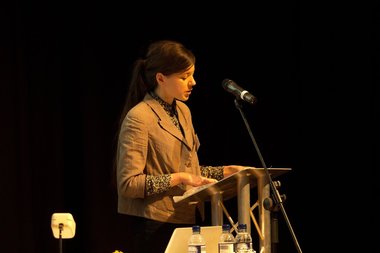

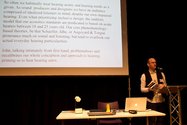
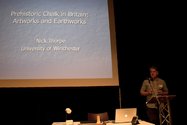
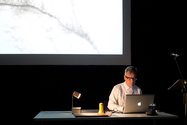
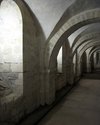

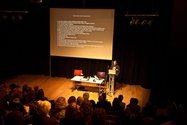

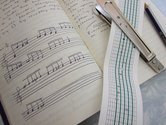
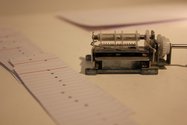
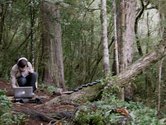
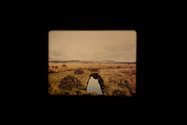
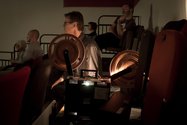
 Two Rooms presents a program of residencies and projects
Two Rooms presents a program of residencies and projects Advertising in this column
Advertising in this column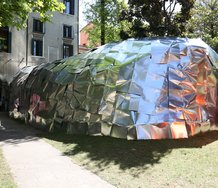
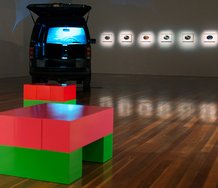

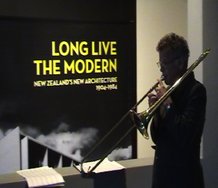
This Discussion has 0 comments.
Comment
Participate
Register to Participate.
Sign in
Sign in to an existing account.